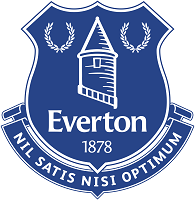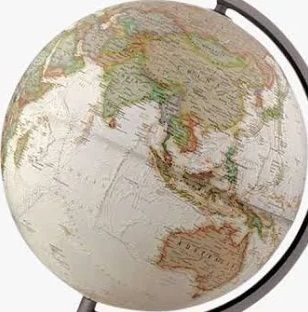


Vale tae Villa and the Toffees
- the upload of the new game


It is clear from my piece The Scotch Professors - Myth, Facts and Alternatives that my conclusion with regard to so-called Scotch Professors of much of the 1880's was that they have become something of a myth. The evidence, the facts point to them having been too few in number until the 1884-5 season and for the next four years with an average age of just twenty-two too young and immature in most cases and at most clubs to have been much in the way of instant teachers. Demonstrators they may have been but organisers seems unlikely with one club as a possible exception. It was Burnley, where the policy was clearly to recruit from one of the three best clubs of the era, Vale of Leven. From it in the two seasons, 1883-4 and 1884-5 first one, Dan Friel, and then four more were attracted to the Lancashire town. Yet even there and with an average age of twenty-five there was little continuity and even less obvious success. Just two stayed more than a single season and there was little dividend in terms of what was the then gold standard, Cup progress. In the next six years the club either did not take part, lost in the First Round to Darwen Old Wanderers 11-0 in 1885-6 and otherwise advanced no further than the 2nd Round.
However, there is an alternative era, in which Scots pedagogy seems to have had the profound effect previously assigned to the earlier arrivals. It began just as Friel's Burnley stay came to an end. The season was 1888-9. The source of the instruction was now three-fold, from all three major Leven Vale clubs, Vale of Leven once more, Dumbarton and above all Renton. And the clubs that were in greatest receipt, also becoming two of the most successful clubs of the next almost decade, were Aston Villa and Everton.
In fact it was the club from Liverpool that first dangled a toe in the Leven pond anew. In 1888 it signed three fresh recruits, Coyne, a forward, from Vale of Leven and Kelso, a defender and Davie, a centre-forward, from the new club on the block, at least in England, Renton. But the signings came with an important caveat. None stayed more than a season. Kelso left for Preston for two seasons before returning. The other two simply moved on. However, Everton did not give up. In 1889 they went back this time to Renton once more for two of its squad, Hannah, the club's international right-back and Brady, a third forward, plus Latta, a second forward, from the third of the Leven Vale clubs, Dumbarton. And this time the first two stayed two seasons, Latta for six and the club in 1890-91 found itself with in all five from Leven Vale on its books, as it took the league title from previously all-conquering, largely Scots but non-Leven Preston.
Yet it could still be argued that Everton failed to understand fully what it was doing. Whilst it recognised that the Leven Vale was at that precise time the source of the much of the most successful football in Scotland and therefore Britain, Renton itself having in 1888 gained the unofficial title of the World's champion club, it perhaps missed long-term why that had been so. In part it was because the seeming fulcrum of Renton's success, James Kelly, was not available for English hire. He had pledged himself to staying in Scotland at newly-formed Celtic. But in fact, although Kelly was important to what had been created at Renton, he was not the essence. That had been the system and it was that which another English club perhaps better recognised.
That club was Aston Villa, which for the 1889-90 season, a year later than Everton, made its first moves bringing in four from Vale of Leven that same year, then three from Renton the following season and then two more again from The Vale, one in each of the two seasons after that. It meant that by 1891-2 the Birmingham club had six in the squad, seven in 1892-3 against the four and seven respectively at the Merseyside club. Moreover, the make-up of the Villa recruits is also interesting as are their effects on results both short- and long-term.
In terms of personnel initially Villa brought in Robert Paton, a very experience, international goalkeeper, Jim Paton, no direct relation, a forward, John Baird, full-back and who was to proved the most important of all, James Cowan, a reserve half-back/centre-half. All came from Vale of Leven, although Cowan had also been associated with Renton. They then were joined by George Campbell, a half-back or left-back, Connor, position unknown, who stayed just one season, and Brown, all now from Renton with Jimmy Brown James Kelly's actual replacement at centre-half at the village club. And finally from Vale of Leven once more, both albeit briefly, in came Jock Fleming, a centre-forward and Jim Paton's brother, Daniel, a forward also. In fact the club had over three seasons imported a Vale player for virtually every position, with Brown staying for all of them before moving on and, as, meanwhile, Cowan had stepped up into the boots of Kelly by proxy after two seasons, in fact, eventually replacing the old master in the Scotland team itself, Villa began a period of continued success. It would finish in the top six in the Football League from its second year for all three of Brown's seasons and then seven more, in all ten years in succession, including wins in the League in 1894, 1896, 1897, 1899 and 1900 and in the Cup in 1895 and 1897.
Now all this is not to say that Vale of Leven, Renton and Dumbarton players did not go elsewhere apart from Everton and Aston Villa. In fact, whilst the three Scots clubs supplied the two English ones twenty-four players over the nine years from 1888 a further forty-odd would also head elsewhere south. But none would be in such concentration nor with success comparable certainly with Villa. And for that there were perhaps two explanations and a corollary.
First explanation is that, whilst the average of the first wave of so-called "Scotch Professors" of a decade earlier had been almost exactly twenty-two, those brought to Everton were six months older and those to Aston Villa twenty-four. The Villa players in particular were more mature and entering what we would now recognise as the best years of the playing careers with much of their learning of the game complete. They knew what they were doing and therefore were capable of passing-on in a way, a complete way, that perhaps can and could not be expected of younger ones.
And then there was the question of who brought the players to the two respective clubs and who decided the system of play. In both cases the answer to the second question is Scots, each clearly with fingers on the pulse of the game in the Auld Country, each aware of tactical developments and the players involved. David Waugh, a figure largely passed over in footballing history but ex. of Larbert in Stirlingshire via Padiham, Burnley and Everton in Lancashire as a player until 1889 was the man in question at the club then playing at Anfield. In fact even as Waugh won the club's first trophy, the 1891 league, indeed its only trophy for the next decade and a half, he may have been a victim of the move to Goodison Park in 1892. It is at that point his name ceases to be associated with Everton, indeed with football, and by 1894 he is living in Glasgow, where he would remain until his death with no known further connection to sport. And meanwhile at Aston Villa it was the rightly lauded George Ramsay, ex. of Glasgow Rovers, then a one-club player with Villa from 1876 until 1882, Club Secretary for precisely forty years from 1886, with what he inherited an FA Cup winner at the first attempt by the end of that first season yet with a plan . It was to rebuild, a task, with which within a half a dozen seasons more and when managers were allowed time he, with perhaps the clearest understanding of the footballing revolution that was taking place North of the Border and more than a little help from its source, the Leven Vale, succeeded spectacularly.
And so to the corollary. Aston Villa's import of Leven men did not continue forever. By 1903 there and elsewhere it was over. The last Leven player of the era, Dumbarton's John Fraser, had left the game in 1912 after a fourteen year career. Renton's last had been in 1907 and Vale of Leven's in 1906. By then both Renton and The Vale had even dropped out of Scotland's top-flight. However, what Waugh to a limited extent and Ramsay to a far greater one had done was to transplant the Renton footballing revolution based upon the concept of the attacking centre-half into the English game, blueing it for good with from then many English players schooled in, indeed, selected for the Scottish style, whether they knew it or not. After Villa Newcastle took up and carried the torch to almost the Great War and with almost comparable success. Moreover, it did so with its Scottish Secretary/Manager, Frank Watt, and in total over nineteen years seventy-two Scots, almost four new faces per season, now drawn from throughout the country, as the same revolution and its product, The Cross, had already been comprehensively embraced in its homeland, clearly ubiquitously but chronologically not by very much. Two of his star-players at the beginning of the 20th Century,
AndyMcCombie and
Peter McWilliam,
hailed from Inverness with the Highland League only founded in 1893 just two years from Watt's arrival at The Toon.
